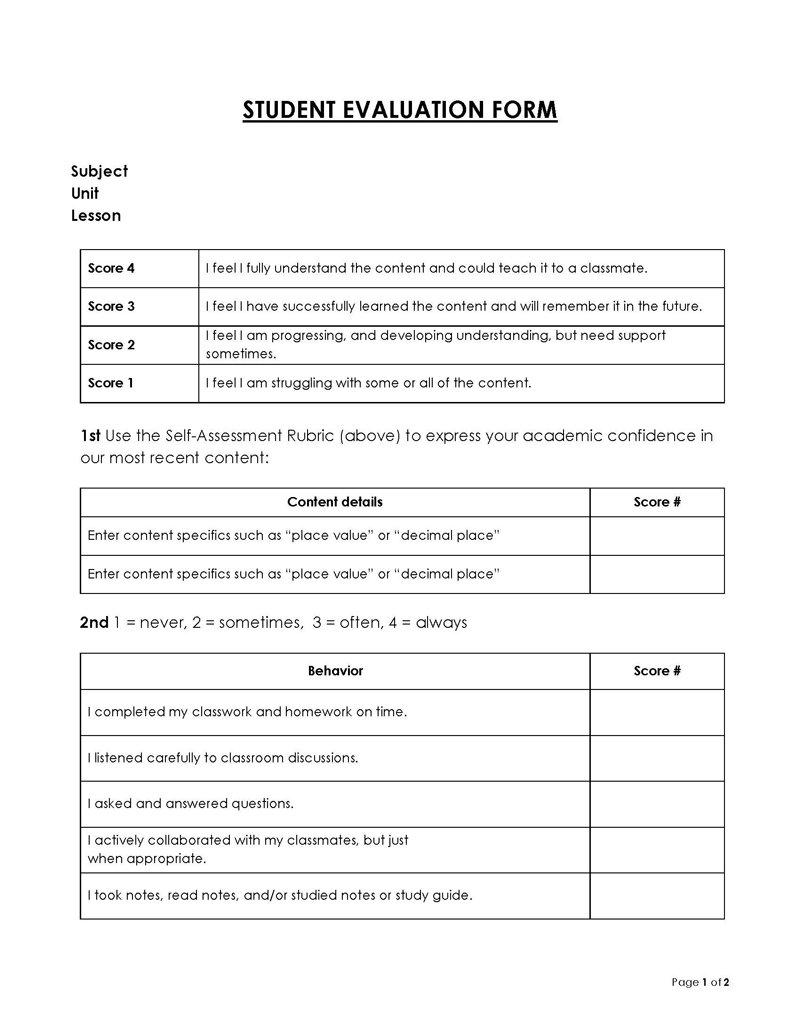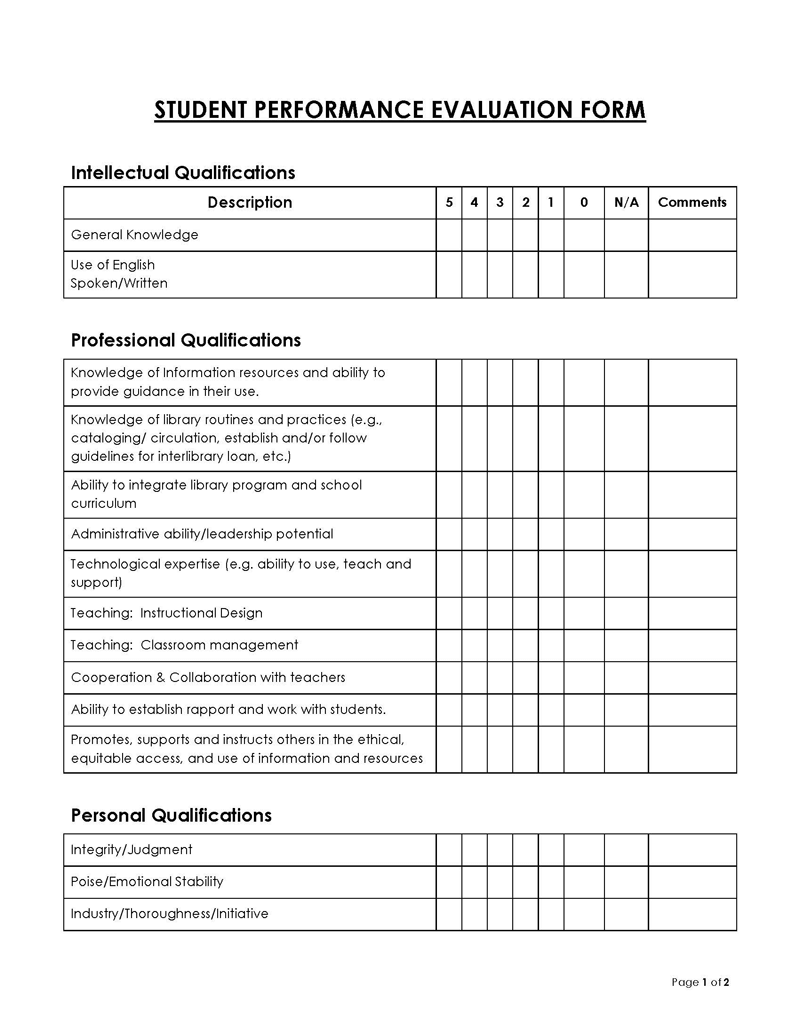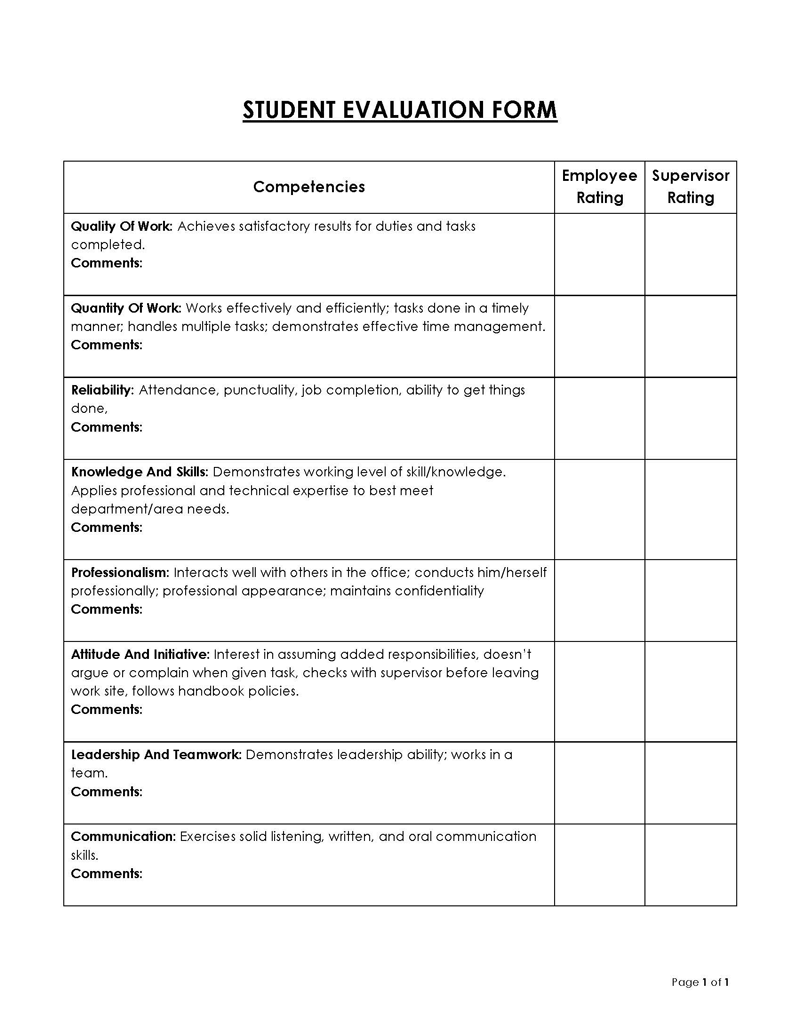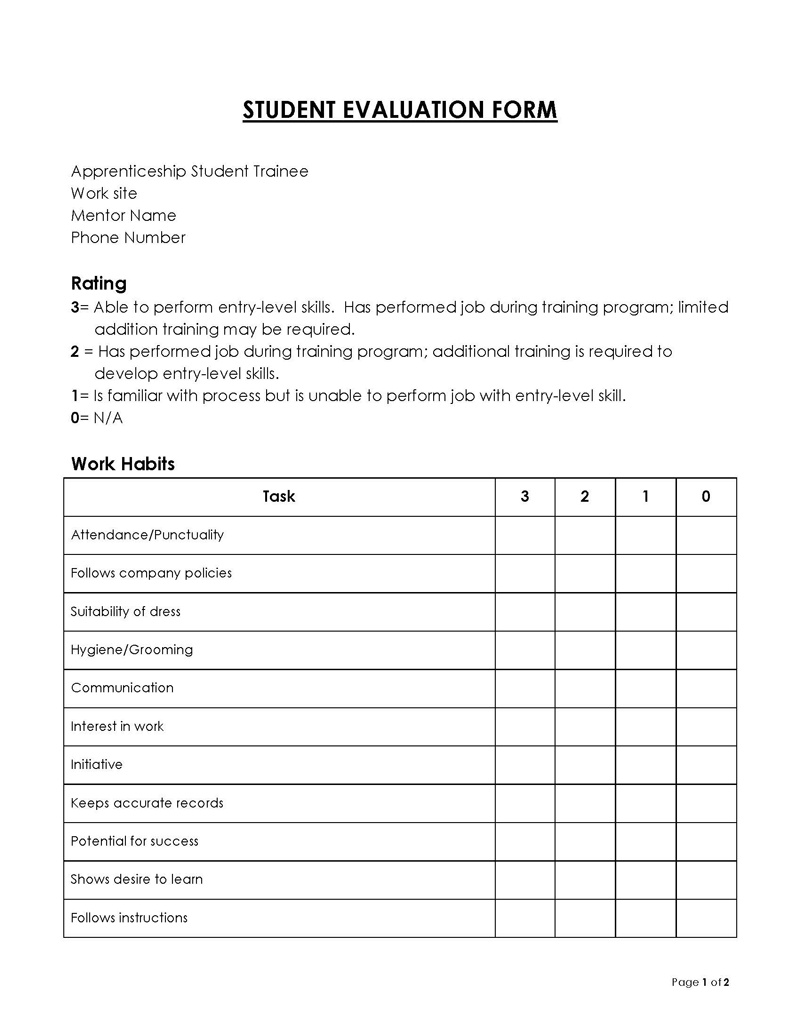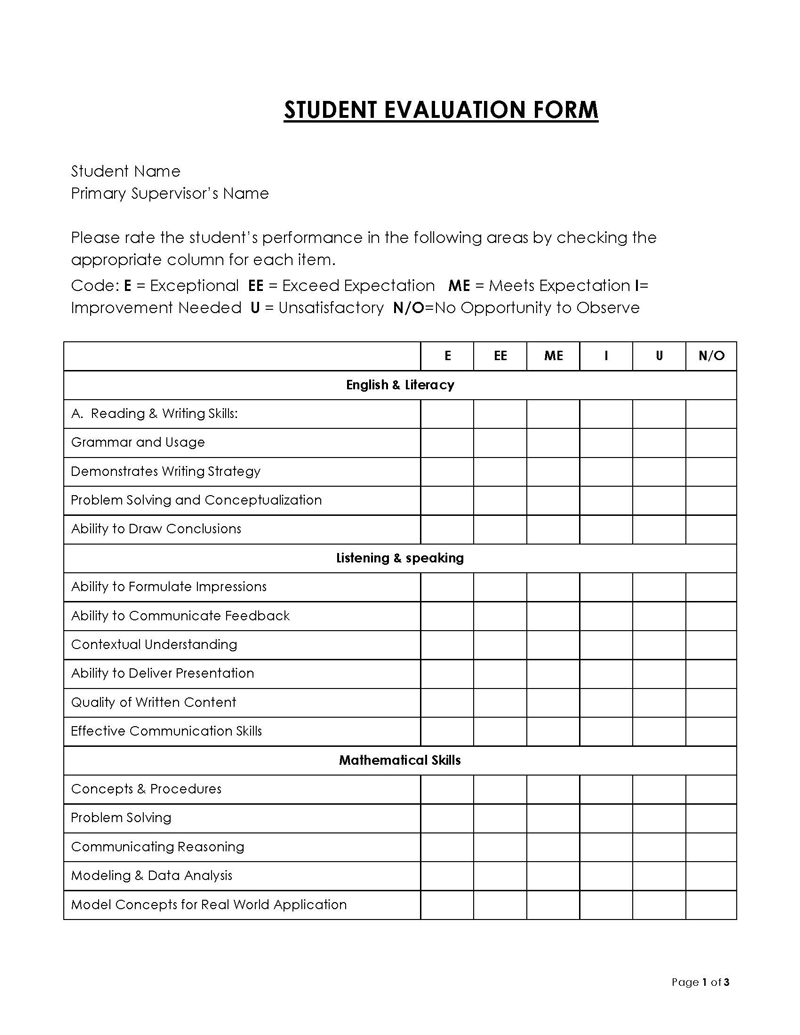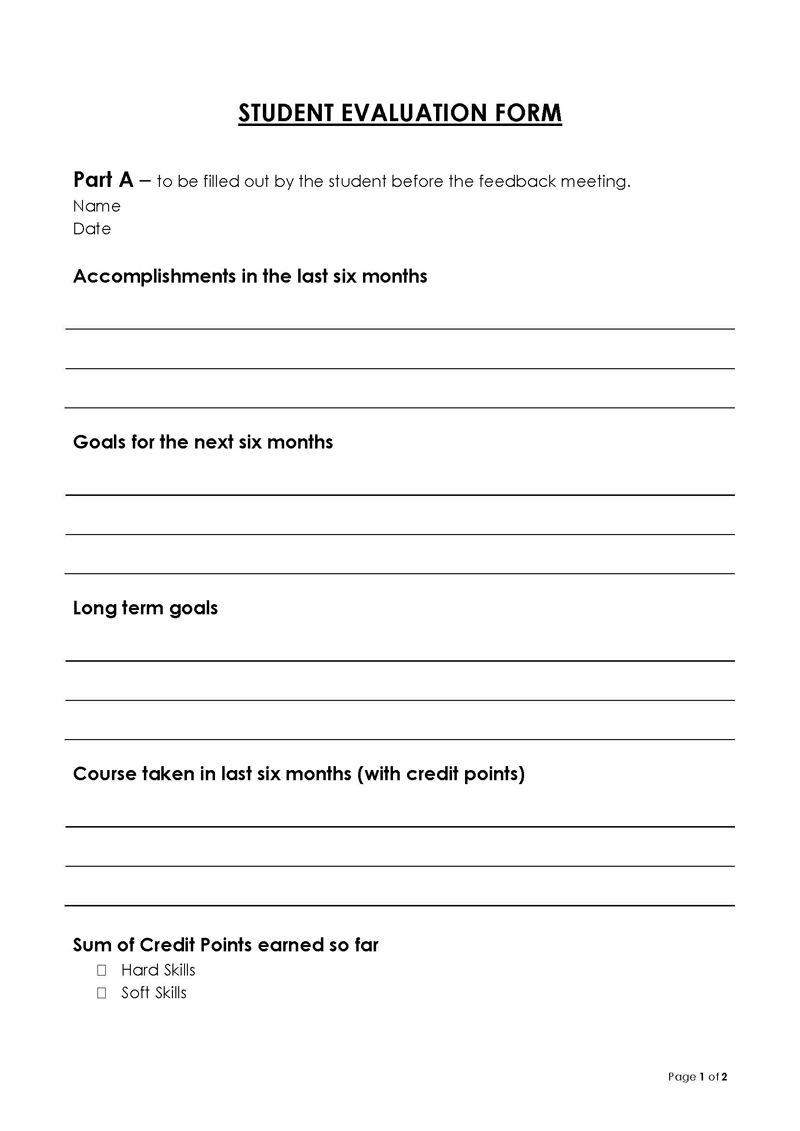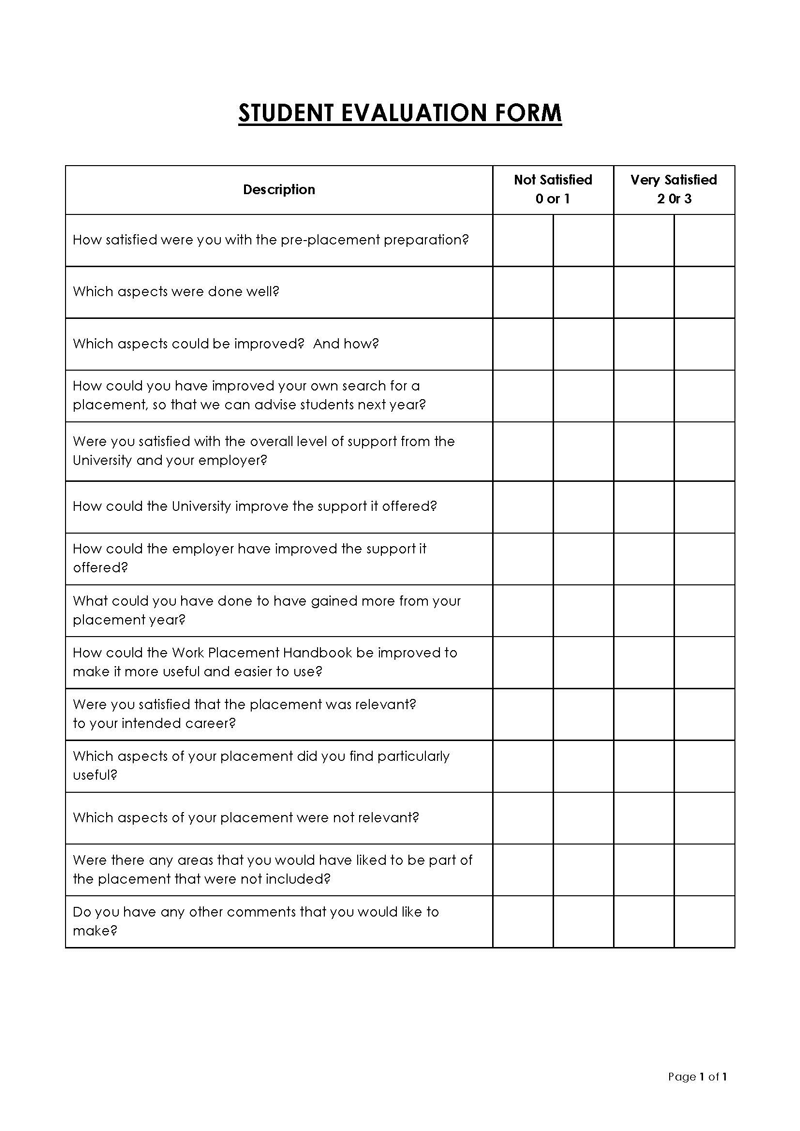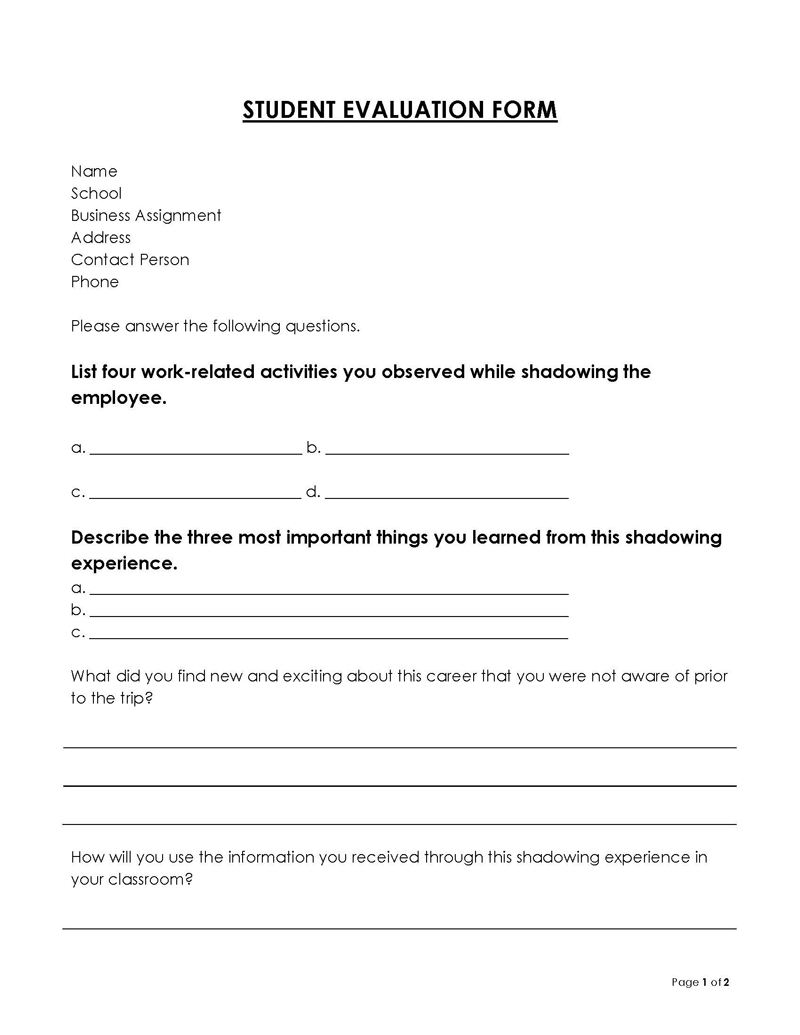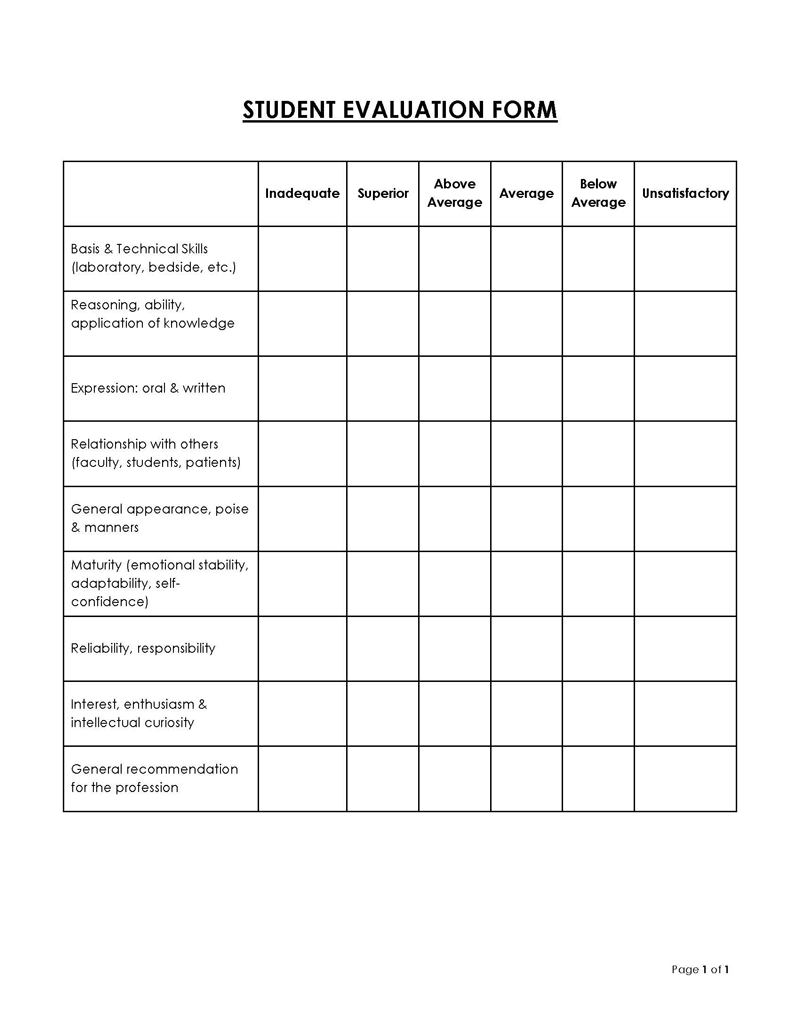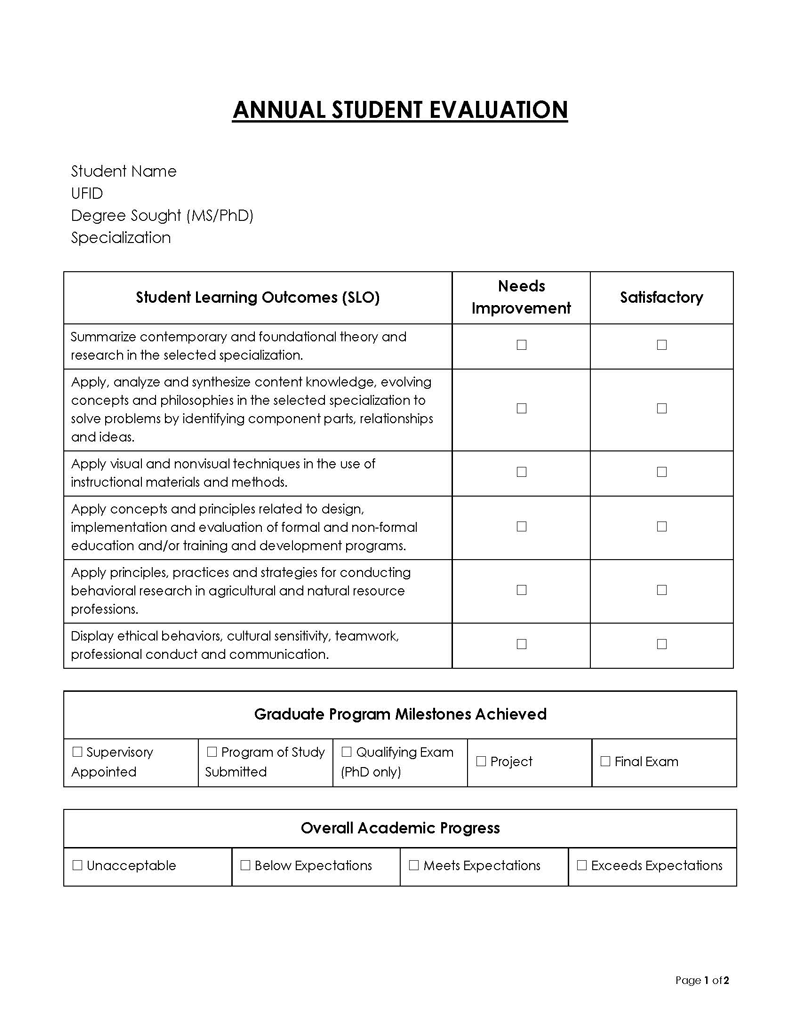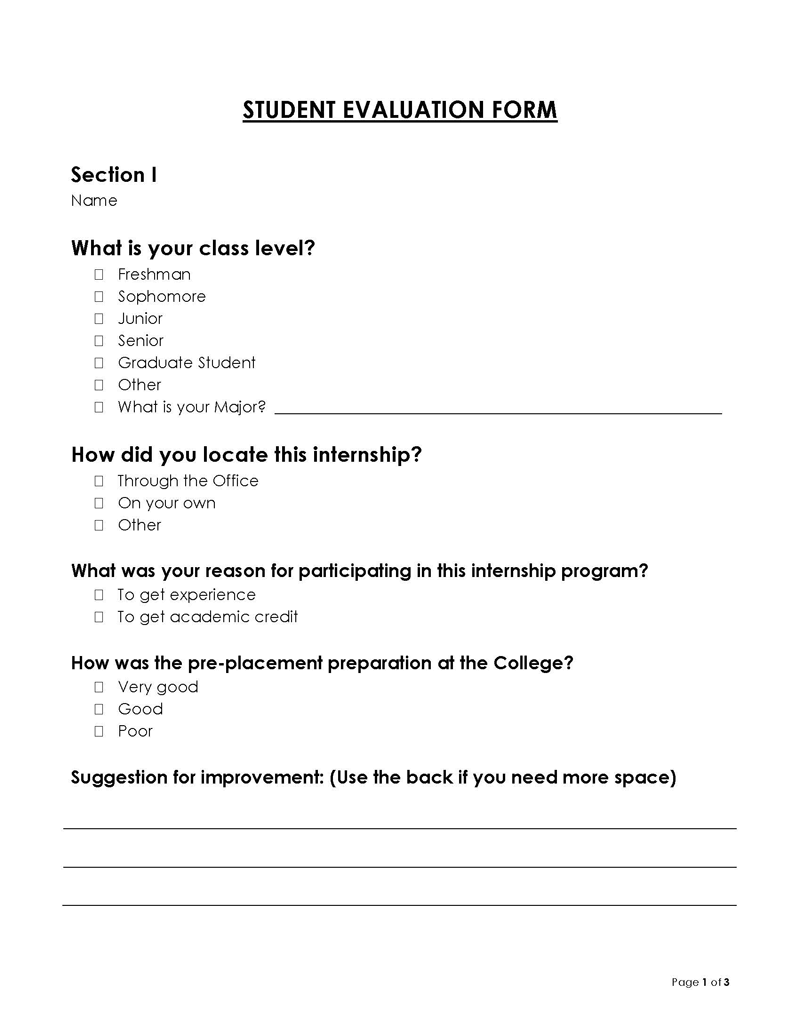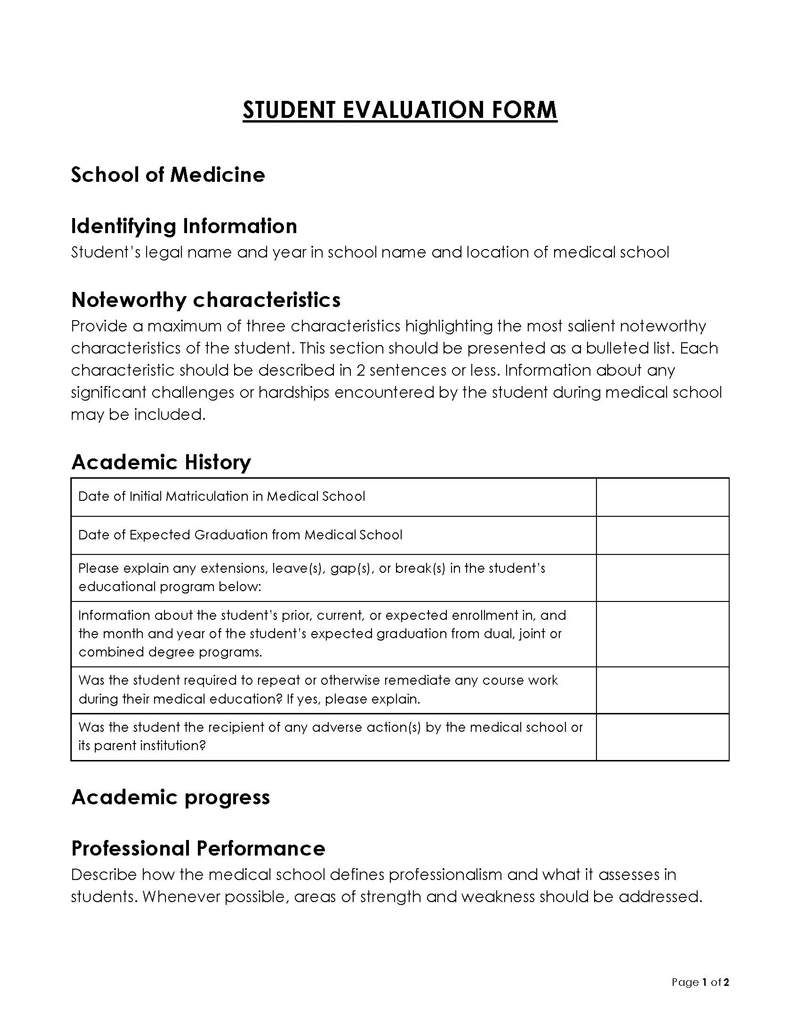A student evaluation form is a tool used by a teacher to assess their students’ learning progress.
This form contains different learning activities that a student takes part in. The teacher indicates how well the student performed in each learning activity, so that they can use this information to improve the student’s performance in the future.
Evaluation is a continuous process that allows a teacher to measure the development of their students academically and socially. It is vital in education as it helps teachers identify students’ weaknesses. A teacher can devise solutions to create a good learning experience upon identifying the weaknesses.
Student evaluation ensures that educational objectives are clarified. They allow teachers to know whether they have successfully changed and developed students’ behavior. Moreover, it helps teachers know more about their student’s abilities, interests, and intelligence. Once a teacher knows all of their students, it allows them to classify them based on their educational strengths. The teacher can then develop different teaching methods for the different groups of students to ensure they all progress academically.
This article helps you understand different approaches to evaluating student learning. It also gives you a step-by-step guide on writing student evaluations and the considerations to make when writing them.
Student Evaluation Templates
You can download the following templates of student evaluation form:
Four Different Approaches to Evaluate Student Learning
Evaluating student learning can be challenging, and for it to be successful, you should use an approach that suits you best. Different approaches can be used to evaluate different parts of learning as well.
The following four approaches will help you determine how to evaluate your students’ learning:
Change weighing scale
At the end of the semester, students receive report cards with a final grade. The final grade consists of scores from tests, assignments, exams, and quizzes totaling 100. The distribution of these marks can be changed so that each assessment has its value in the final grade, allowing you to decide the importance an assessment or activity has on the final grade.
Use informal observation
Evaluating a student can be done by simply observing them. Observing your students’ behavior throughout the day is essential since it gives you more information on their learning progress. For example, you can watch how students interact and record the information in journals or recorders for you to assess later.
Allow for self-assessment
Students can also be allowed to assess themselves, enabling them to know the amount of progress they are making. They can identify their weaknesses and develop revision plans to catch up with the rest. Self-assessment also makes them interested in their learning progress and motivates them to perform better.
Provide multiple test formats
To get reliable and accurate information from the students, you should give your test in a format that allows them to express themselves fully. Students with difficulty writing can be given oral tests or puzzles to solve. This enables all your students to give you good information you can use to evaluate them.
Writing Student Evaluations: Step-by-Step Guide
Student evaluations should be done carefully to ensure you give the correct information about the student you have assessed. This is because the information is typically read by individuals interested in knowing more about the students’ performance. Following a step-by-step guide allows you to conduct your evaluations extensively and ensures that you include all the relevant information.
The guide below can assist you in writing your student evaluations:
Step 1: Formulate strategies for the evaluation
Before doing evaluations, developing strategies to ensure your evaluation is a success is essential as it gives you ways to make your evaluation more informative about the student assessed. The strategies also allow you to assess your students adequately, storing only valuable and relevant information that can be used in your final evaluation.
The following are examples of strategies you can use:
- Everything that you need to be done by your students for evaluation should be recorded and kept quarterly. This lets your audience know whether the student submitted their work consistently and promptly.
- Assessments should be recorded and stored in a computer file allowing you to collect small pieces of information over time. This information can be used in your final evaluation, making it more informative to the audience.
- Some projects take the whole semester to complete, and it is best to wait until the end of the semester to give your evaluation of the project. It ensures that you avoid repetition and keep your evaluation focus succinct.
- When working as a team to teach students, you should agree with your team members on how to write the final evaluation. It is important to decide how the assessment is done and how each person contributes toward writing the evaluation. The final evaluation should be kept short and comprehensive.
- Students should be allowed to do self-evaluations to get feedback from them. These evaluations can be collected before the last teaching day to avoid late submissions and unsubmitted evaluations.
Step 2: Choose a narrative approach for your evaluation
Knowing the narrative approach you want to use in your evaluation is essential. The narrative approach is the aspect of your student’s education that you would use to measure and assess when doing your evaluations. It is advisable to use learning outcomes as the basis of your evaluation. You can come up with objectives to be obtained by the students at the end of the quarter and measure the progress made toward obtaining those objectives.
Other examples of narrative approaches include:
- Skills, where students can be evaluated depending on how close they are to perfecting a specific skill.
- Development of the student’s work and behavior from previous assessments.
- The most important work given to the students, e.g., exams.
Step 3: Begin writing your evaluation
The opening statement of your evaluation should describe the student’s work. Afterward, let the reader know that you will evaluate students based on the learning outcomes in the description. This allows your reader to establish the narrative approach you have used in your evaluation. If you list all the faculty teaching in your program as the writers, it is advisable to use paragraphs each person has written to address these outcomes.
An example of how you can begin your evaluation is:
Rufus met some of the learning outcomes in Foundations of Life this semester. Her attendance was excellent. She did her assignments on time and worked well with other team members.
Step 4: Evaluate student’s work in seminars
Seminars allow students to learn, making it essential for teachers to evaluate them. When evaluating students’ work in seminars, the objectives and intended learning outcomes are used to evaluate the students. This is done by determining the extent to which the student is close to achieving them. It is essential to ensure that there is an understanding between the students and yourself regarding evaluation and how assessments are done.
Ensure that you engage all students in the seminar to get feedback for assessment. Students in the seminar should be allowed to express themselves comfortably to ensure they give you all the information you need. However, students come from different cultures, and some may not be comfortable expressing their feedback. In this case, you can use a different approach by placing the participants in groups where they can contribute and share their experiences.
Step 5: Write the concluding statement
When concluding an evaluation, you should inform the reader how much the student has progressed preparation-wise. Your conclusion should be a reflection of your evaluation of the student, and it should be consistent.
You can conclude by writing;
James is ready for salesmanship, although he needs to work more on customer relations to be fit for marketing.
Or
To wrap it up, Sarah has the potential to become an outstanding team leader if she can take the time to work on her leadership skills and find the right mentor.
Student Evaluation Forms
Coming up with a proper student evaluation form can be a difficult task. Having a template ready helps you save time and focus on more important evaluation details. You also get to avoid mistakes made when creating the form from scratch and ensure that you get to include everything that your evaluation may need. Make your work easier by downloading the free student evaluation form templates provided below and customizing them to fit your evaluation needs.
Special Considerations for Student Evaluation
Some considerations have to be made for you to make a successful student evaluation. They ensure that your evaluation gives you relevant information that can be useful later on.
Considerations that can be made to perfect your student evaluation include:
Keep the focus narrow
A general rule for successful student assessments is to keep the evaluation form short and precise. You can achieve this by focusing only on the specific aspects you want to evaluate. A general evaluation of a student gives a vague understanding and raises more questions about their learning progress. You should be able to point out the specific skill or concept the student has worked on and the extent to which they have learned it.
Address your evaluation to outsiders
Student evaluation should be addressed to employers, district offices, and school admissions committees/administrators. It helps students see that their work can be recognized in different areas of the outside world. You can also write informal letters regarding evaluation to your students. The letter may give a more detailed description of the student’s progress, which can significantly help them improve in specific areas of their academics.
Avoid compiling evaluations from multiple faculty members
Your evaluation should be obtained from recent assessments and faculty members. Compiling evaluations from multiple faculty members leads to a vague and repetitive evaluation. Instead, limit the number of faculty members you may need to obtain information from and evaluate your students from your assessment.
Be concise and avoid repetition
Your evaluation should be reader friendly since the person going through it may not have adequate time to do so. Therefore, it is advisable to be brief and comprehensive. Doing this allows you to include only relevant information while avoiding repetition.
Final Thoughts
Student evaluation forms are an essential part of education since they allow teachers to assess their students. This information is vital as it is used to know the students learning progress and develop ways to ensure that they are on the right path. Evaluation can be done through observation, changing the distribution of scores on the final grade, allowing students to assess themselves, and giving them tests in different formats. When writing your evaluation, it is essential to keep your focus narrow, be concise and avoid repetition. Your evaluation should not be a compilation of multiple faculty members and should be addressed to outsiders, allowing your students to know that their work matters.
